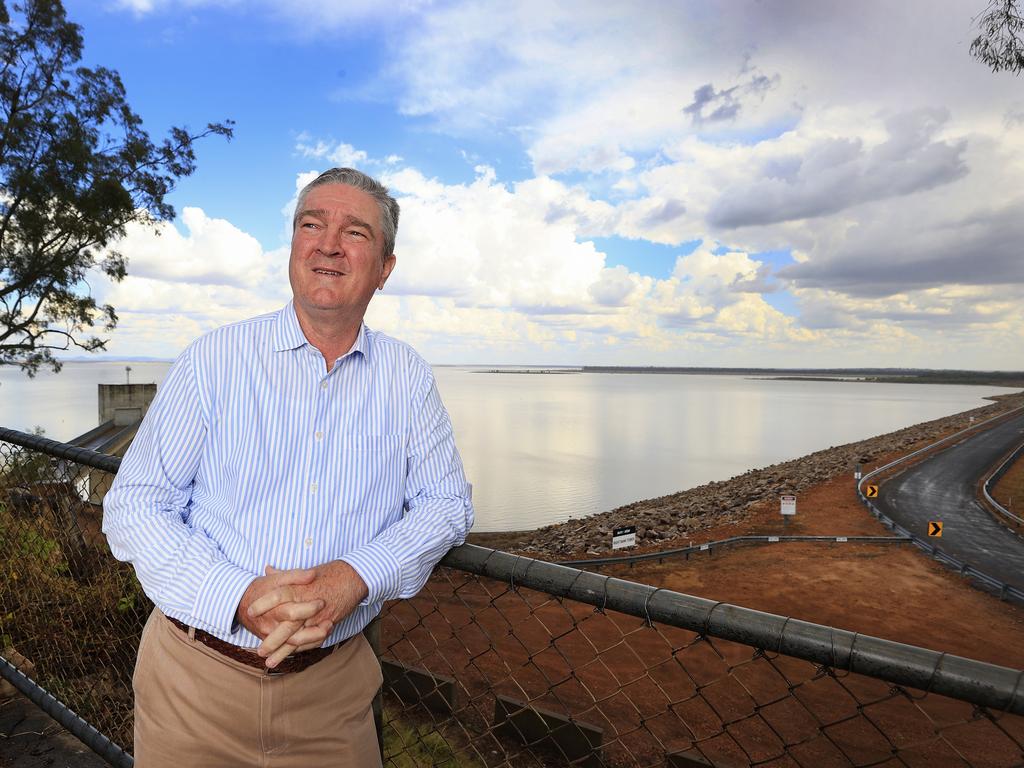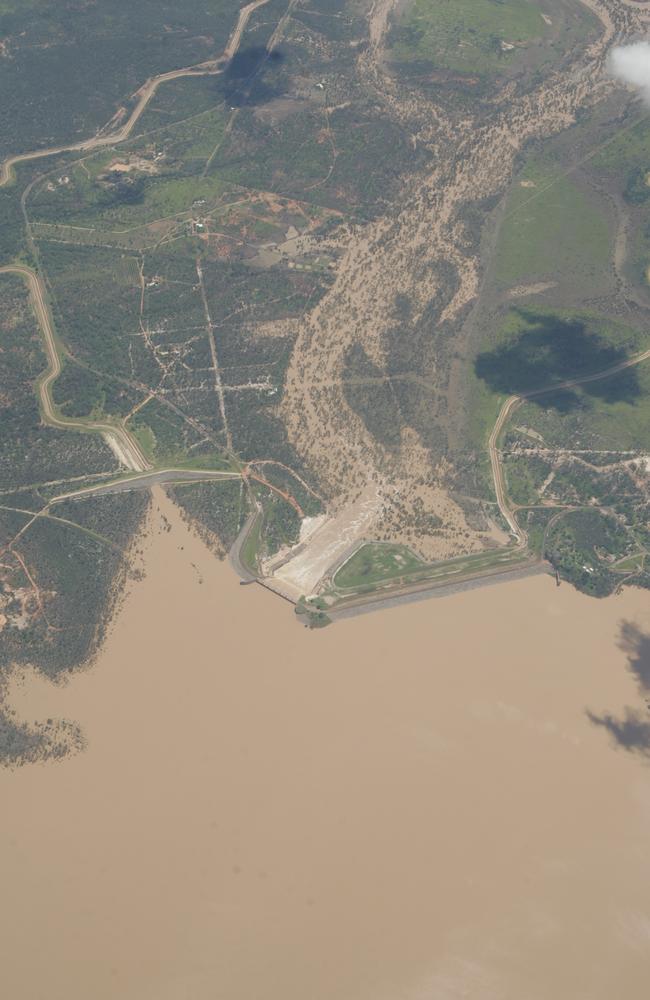Fairbairn Dam: The mega project that transformed Central Highlands
If it were proposed today, it would be laughed out of the Environment Court. But this mega project helped build Central Queensland as we know it.
QLD Politics
Don't miss out on the headlines from QLD Politics. Followed categories will be added to My News.
If it were proposed today, it would be laughed out of the Environment Court.
From an economic perspective, even the most cursory cost-benefit analysis would swiftly conclude that the outrageous proposal to dam the Nogoa River in the Central Highlands simply “doesn’t stack up financially’’.
Fifty years on from the completion of one of Australia’s last great nation-building projects, the data is in on the economic benefits of Emerald’s Fairbairn Dam, completed in 1972.
And that data is so extensive and far-reaching, billowing out of the Central Highlands to affect every corner of this state and nation, no single individual could possibly comprehend it let alone calculate it.
“It made the Central Highlands happen,’’ is the verdict of Mayor Kerry Hayes on that vast inland ocean of water most know as Lake Maraboon, which draws thousands of people annually for camping, boating, fishing, waterskiing, jetskiing and kayaking.
The cost of the dam and associated irrigation system was $39m in 1970s dollars, the catchment goes back to the Carnarvons 300km away, it can hold three times the volume of Sydney Harbour, covers 15000ha and, because it exists, so does one of Australia’s more productive agricultural precincts.

Surrounding Emerald in a wide arc stretching more than 20km are farms producing cotton, citrus, grapes, wheat, sorghum, maize, oats, barley and sunflowers.
Further out from the town, a series of mines exists largely because of Fairbairn Dam water.
The Central Highlands’ Gross Regional Product is now estimated at $6.029bn, while the Central Highlands represents 25.6 per cent of Central Queensland’s Gross Regional Product of $23.567bn, 1.3 per cent of Queensland’s Gross State Product of $447.487bn, and 0.3 per cent of Australia’s Gross Domestic Product of $2.309 trillion.
The taxes which have flown out of the Central Highlands into federal, state and local government treasuries have helped fund hospitals, schools and tertiary institutions such as the James Cook University in Far North Queensland.
That university started life almost simultaneously with Fairbairn Dam and now boasts a world-class environmental science faculty which regularly throws up talented graduates who can tell you, with an admirable and earnest authority, precisely why the dam should never have been built in the first place.
Mr Hayes, who has family links to the Central Highlands stretching back generations, played with the kids who occupied the construction camp as Fairbairn took shape in the early 1970s.
He can remember Emerald in those days – a dusty railway stop with a pub.
Nearby Clermont was the big smoke.
“That water,’’ he says, pointing to the vast expanse of Lake Maraboon, “changed everything.’’
Today, Emerald’s population has increased fivefold to more than 15,000 people, the wider region represented by the Central Highland Council which Mr Hayes heads will soon tip over into classification as a city, and Emerald, even in the midst of drought and mining downtowns, has developed an element of self-sustainability which ensures it will not regress into one of those ghost towns which dot the Queensland interior.

Yet, as most mayors across regional Queensland will tell you, building a giant dam requires a social licence which has been largely cancelled by the majority which now lives in the nation’s cities.
There are nearly 70 large surface-water storages (more than 10,000 megalitres) and 271 small-surface water storages across Queensland, and the ongoing creation of smaller structures such as the Rookwood Weir near Rockhampton at a cost of $568m is proof positive they are still being built.
A White Paper released by then prime minister Tony Abbott’s Coalition government in 2015 still has currency under the present Labor regime and is also unabashed in its support of major dams.
The White Paper points out that up to 17 million hectares of land in Australia’s north has soils potentially suitable for agriculture, but there is only sufficient water to irrigate one tenth of that area.
Yet, unless there is a major shift in our political landscape (and a major rewrite of the federal Environment Act) Queensland is unlikely to see another piece of water infrastructure as impressive in scope and vision, and as beneficial to our prosperity, as the Fairbairn Dam.






